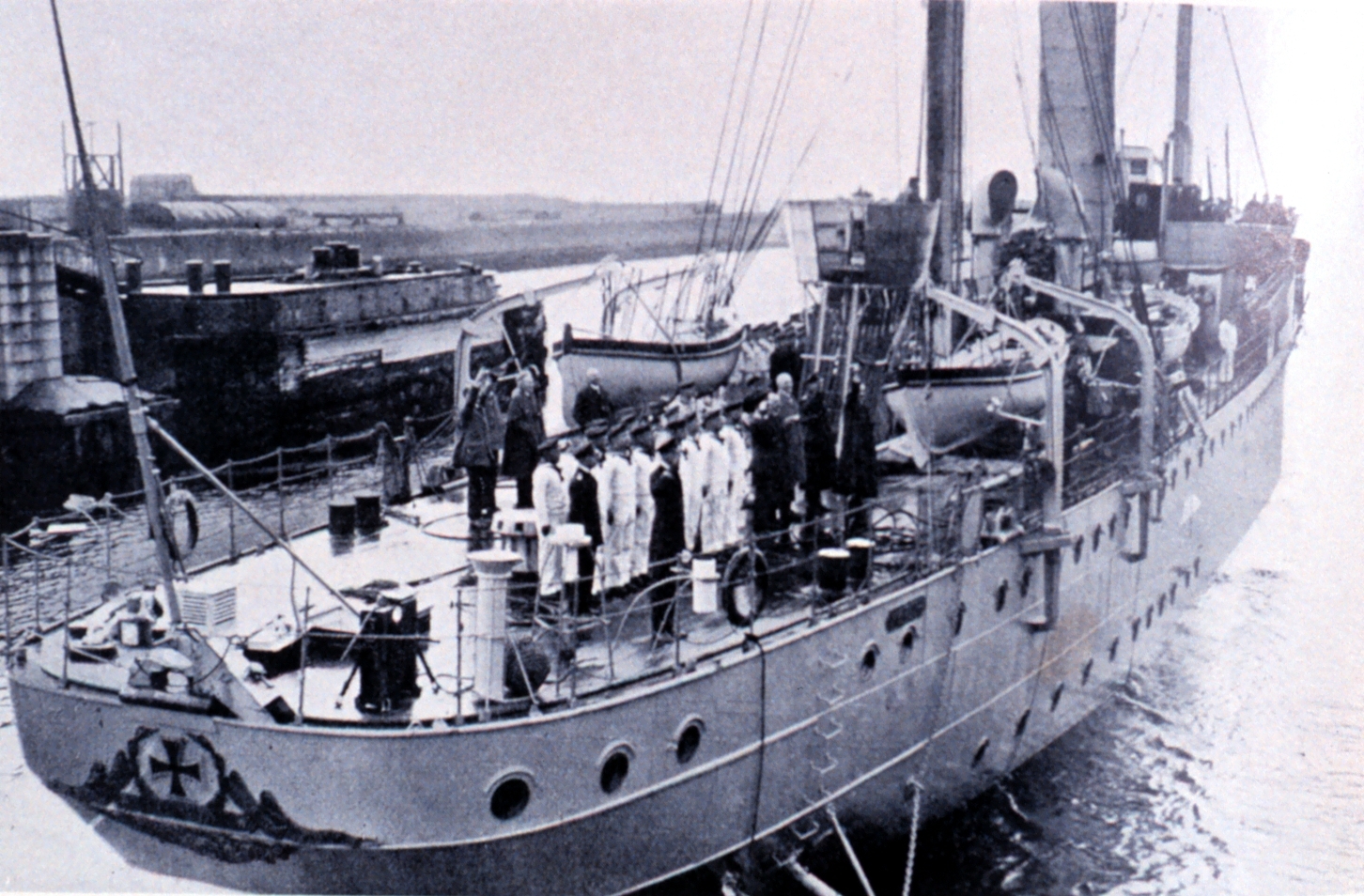German survey ship Meteor on:
[Wikipedia]
[Google]
[Amazon]
''Meteor'' was a German survey vessel, noted for her survey work in the Atlantic Ocean between 1925 and 1927. Handed over to the Soviet Union following World War II, the ship was renamed ''Ekvator''. Her ultimate fate is not known.

 ''Meteor'' entered service in November 1924 and made her maiden survey expedition between 20 January and 17 February 1925 with the main purpose to check the equipment. On 16 April 1925 ''Meteor'' started the ''German Atlantic expedition'', also known as
''Meteor'' entered service in November 1924 and made her maiden survey expedition between 20 January and 17 February 1925 with the main purpose to check the equipment. On 16 April 1925 ''Meteor'' started the ''German Atlantic expedition'', also known as
Design and construction
Her keel was laid at the Kaiserliche Werft at Danzig in February 1914 and ''Meteor'' was launched in January 1915. Originally intended to become a gunboat for the Imperial German Navy's colonial service she was not finished during the First World War due to limited need for lightly armed vessels. After the war the uncompleted hull was tugged to Wilhelmshaven for outfitting work at the Reichsmarinewerft. She was outfitted as a survey vessel and early sonar equipment was fitted. The ship had a steel hull with two propellers each driven by a triple-expansion steam engine. Additionally she had abrigantine
A brigantine is a two-masted sailing vessel with a fully square-rigged foremast and at least two sails on the main mast: a square topsail and a gaff sail mainsail (behind the mast). The main mast is the second and taller of the two masts.
Older ...
rig to boost range.
Career
''Meteor'' was commissioned as a military ship with the Reichsmarine but spent most of her life in a scientific role.Scientific work

 ''Meteor'' entered service in November 1924 and made her maiden survey expedition between 20 January and 17 February 1925 with the main purpose to check the equipment. On 16 April 1925 ''Meteor'' started the ''German Atlantic expedition'', also known as
''Meteor'' entered service in November 1924 and made her maiden survey expedition between 20 January and 17 February 1925 with the main purpose to check the equipment. On 16 April 1925 ''Meteor'' started the ''German Atlantic expedition'', also known as German Meteor expedition
The German Meteor expedition (German: ''Deutsche Atlantik Expedition'') was an oceanographic expedition that explored the South Atlantic ocean from the equatorial region to Antarctica in 1925–1927. Depth soundings, water temperature studies, wat ...
, and did not return to Germany until 2 June 1927. During this expedition the ship sailed more than and took cross sections of the South Atlantic between Africa and South America mapping the entire ocean.Stein In the course of this survey work ''Meteor'' found a bank (seamount
A seamount is a large geologic landform that rises from the ocean floor that does not reach to the water's surface (sea level), and thus is not an island, islet or cliff-rock. Seamounts are typically formed from extinct volcanoes that rise abru ...
) that rises to below sea level from a depth of . This bank was named ''"Meteor Bank"'' ().
Between 1929 and 1935 ''Meteor'' made several journeys to Iceland and Greenland, where she performed survey work as well as fishery protection duties.
A ''North Atlantic Expedition'' was performed in 1937/38 in order to take cross sections of the North Atlantic
The Atlantic Ocean is the second-largest of the world's five oceans, with an area of about . It covers approximately 20% of Earth's surface and about 29% of its water surface area. It is known to separate the "Old World" of Africa, Europe and ...
that complemented the earlier survey work done in the South Atlantic. During the ''Gulf Stream Expedition'' from 1938 a plateau rising to below surface from a sea depth of more than 4,000 m was discovered. In order to distinguish it from the smaller bank found in the South Atlantic, this bank was named ''"Great Meteor Bank"'' and is today known as Great Meteor Seamount ().
Second World War
With the outbreak of the Second World War the ship was removed from service on 8 September 1939. Reactivated in 1940 ''Meteor'' was used as atender
Tender may refer to:
Entertainment Film
* ''Illegal Tender'' (2007), a film directed by Franc. Reyes
* ''Tender'' (2012), a short film by Liz Tomkins
* ''Tender'' (2019), a short film by Darryl Jones and Anthony Lucido
* ''Tender'' (2019), a sh ...
in the Baltic Sea as well along the Norwegian Coast. With the end of the war, the ship was laid off in Kiel.
Soviet service
In November 1945 the ship was handed over to the Soviet Union, but briefly returned into German service for a few months in 1946 to perform survey work under Soviet supervision. Eventually she became the Soviet survey vessel ''Ekvator''. Her final fate is unclear, she was either scrapped in 1968 or survived some more years as a barracks ship.Heritage
Two German research vessels were named after the ''Meteor'': * ; sold to New Zealand in 1986 and renamed ''Rapuhia''; scrapped 1993 * ; in serviceSee also
* German Meteor expedition 1925-27 * Meteor Deep, deepest spot of the South Sandwich Trench (8,428 m) * Great Meteor SeamountReferences
Sources
* * * {{DEFAULTSORT:Meteor (ship) Research vessels of Germany Ships built in Danzig Ships built in Wilhelmshaven Auxiliary ships of the Reichsmarine Auxiliary ships of the Kriegsmarine Research vessels of the Soviet Union 1915 ships